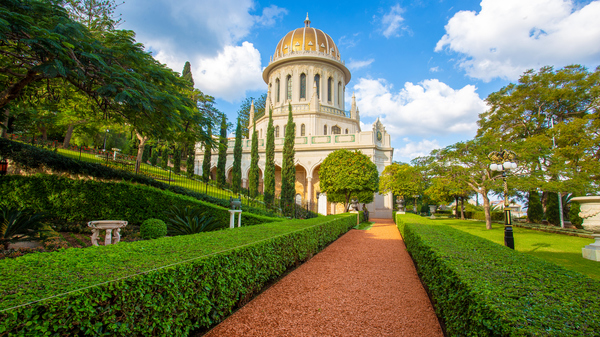The Baháʼí Calendar
The Badi of the Baháʼí (also spelled Bahai) religion is a solar calendar that divides the year into 19 months, each named after a virtue. Year One is dated from the start of the teaching of the faithʼs prophet and corresponds to 1844 CE.

The Shrine of the Bab in Haifa, Israel, is one of the holiest sites in the Baháʼí religion.
©iStockphoto.com/fotofantastika
Structure and Leap Year
This method of timekeeping divides the year into nineteen months of nineteen days each. The total of 361 days is supplemented by four or five intercalary, or extra, days which are added to harmonize the calendar with the Earthʼs movements around the Sun.
Each new year, known as Naw-Ruz, begins close to the Northern Spring Equinox, and was originally based on the date of the Sun entering the constellation of Aries. Years following this calendar are identified by the notation BE, for Baháʼí Era.
The Bahá'í leap year occurs when five extra days, instead of the usual four, are added before the last month of the Baháʼí calendar year. This usually happens every four years.
Months in the Badi Calendar
| Arabic name | English name |
|---|---|
| Bahá | Splendor |
| Jalál | Glory |
| Jamál | Beauty |
| ʻAẓamat | Grandeur |
| Núr | Light |
| Rahmat | Mercy |
| Kalimát | Words |
| Kamál | Perfection |
| Asmáʼ | Names |
| ʻIzzat | Might |
| Mas͟híyyat | Will |
| ʻIlm | Knowledge |
| Qudrat | Power |
| Qawl | Speech |
| Masáʼil | Questions |
| S͟haraf | Honour |
| Sulṭán | Sovereignty |
| Mulk | Dominion |
| Ayyám-i-Há | The Days of Há |
| ʻAláʼ | Loftiness |
End of Year Festival and New Year Fast
During the intercalary days, Baháʼí followers celebrate the festival of Ayyám-i-Há. Members of the faith are encouraged to use this time to celebrate the unity of God and dedicate themselves to charity. Many Baháʼís exchange small gifts during these “extra” days, but the main focus is on charitable giving and humanitarian projects.
At the end of the festival, worshippers start a nineteen–day fast, which ends on the Bahá'í New Year, Naw-Ruz (also spelled Nowruz or Naw-Rúz).
Eleven Holy Days
The Badi (translated as “to create anew”) calendar designates the most important symbolic dates for the faith. Adherents observe eleven Holy Days in a religious year, abstaining from work on nine of them. Each month is named after a valued virtue, or attribute of God, such as Bahá’ (Splendor), ‘Ilm (Knowledge), and Jamál (Beauty).
History and Background
This calendar was conceived by the prophet of the faith known as the Bab in the 1840s and was later adapted and institutionalized by the religion´s founder, the Bahá'u'lláh, in the 1870s.
Unanswered questions about the Badi in the community are resolved by the governing body of the faith, the Universal House of Justice, whose edicts about reforming the calendar were put into practice in 2015 CE.
In order to create a uniform celebration for adherents worldwide, it was determined that the new year would always begin at sunset on March 20, despite the fact that the vernal equinox can occur on March 20, 21 or 22.
Sunrise and sunset in your location
These changes allowed the Badi calendar to operate in harmony with the Gregorian calendar, and came into effect at the start of the Bahai year 172 BE, or 2015 CE.